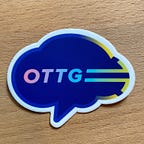Optimizing An Education Organization’s Technology Stack
We’re now a more than a year into at-home-centered education and learning, and I reckon nobody — neither educators, students, or parents — would say that education technology (“edtech”) has come to the rescue. In fact, if there’s one lesson from how the pandemic has altered the delivery of education over the last many months it should be a reinforcement of the message that edtech serves as a means to an end when it comes to supporting students. The ultimate goal remains student engagement and success, and edtech assists teachers by enabling them to more effectively and efficiently engage students — and increasingly their parents — through anytime, anywhere learning.
Eric Nentrup’s recent series for GettingSmart.com offers a simplified three-tiered Education Technology Stack that, when seamlessly connected, might deliver the efficiencies and effectiveness educators desire:
On the surface, the “Ed Tech Hierarchy of Needs” and the resultant Ed Tech Stack provide a simple framework for educators to get their arms around:
- Student information system — this is the home for stakeholder data (class rosters, grades, attendance, etc.)
- Learning management system — this is the central repository for the instructional interaction between curriculum and assessment
- Learning object repository — this is the specialized learning content and skills that students must master by subject
However, as simplifying as this “Ed Tech Stack” appears, the underlying (and oftentimes debilitating) challenge that education organizations face is the simple fact that each of these three layers are, in reality, islands or walled gardens that don’t easily work together. The literal gaps in the image rendered above represent real-life gaps when it comes to how difficult it is for the valuable information and content ensconced within each tier to find its way to the right stakeholder at the right time so a meaningful difference can be made in a student’s learning journey.
Indeed, one of the most illuminating quotes in the final of Nentrup’s three-part series poignantly states:
“…finding a better standalone communication platform could further knit together collaborative efforts throughout the edtech stack, and provide some flexibility for changing those platforms without disrupting the workflow.”
Exactly. Education organizations should absolutely invest in the three tiers of a SIS, LMS, and LOR, but the only way to optimize those investments is to ensure that these organizations also invest in a modern 2-way communication platform that bridges the gaps between these separate systems. Adding a robust communication platform as the “4th layer” to the Ed Tech Stack enables true interoperability across all of an education organization’s edtech investments. Further, to fully leverage all of an organization’s edtech investments this communication layer must:
- facilitate communication from the top of the organization (e.g. the administrator suite), down to the school or department level, and ultimately in a high fidelity manner at the classroom level between teachers, students, and parents;
- connect all three of the other tiers in the Ed Tech Stack so it’s easy for content and information from the SIS, LMS, and/or LOR to flow in all directions amongst all stakeholders (as appropriate);
- evolve its own technology capabilities to fully support ongoing upgrades and/or swap outs across the SIS, LMS, and LOR layers.
At Remind, when we imagine the role that 2-way communication plays within an education organization it too takes on a three tiered visual as depicted in the image below. When this communication pyramid is connected with the SIS/LMS/LOR stack, an education organization takes a huge step forward in enabling its educators to fully engage the students and families throughout its community.
Remind’s Communication Pyramid - Engaging The Entire Community
